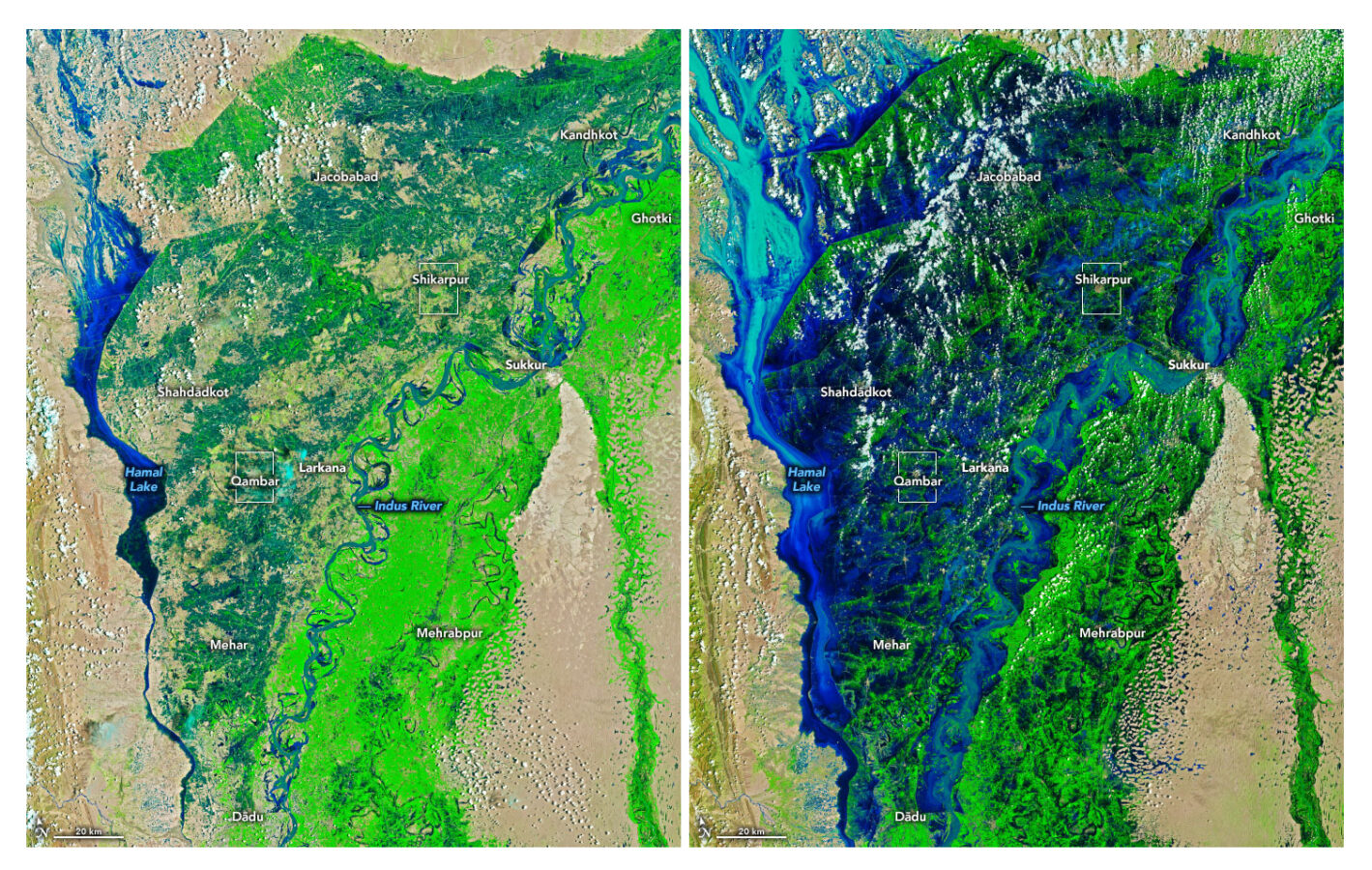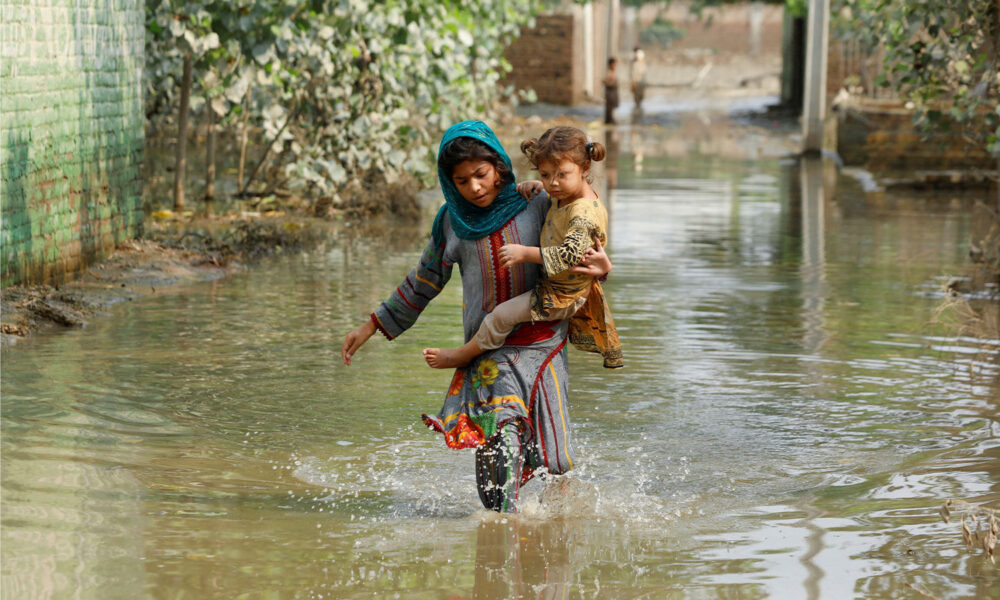Wherever you live, and if you’ve been following news headlines, you know that climate change is dangerously supercharging extreme weather, with deadly and costly consequences for millions of people around the world. Just this past week, Hurricane Fiona dealt a harsh blow to Puerto Rico, Alaska was hit by a severe coastal storm, and much of Japan was lashed by Typhoon Nanmadol. Meanwhile, vast parts of Pakistan remain underwater from extended flooding caused by unnaturally intense monsoon rainfall, the Horn of Africa is in the midst of a persistent multi-year drought, Nigeria is experiencing record flooding, and earlier this year India and Pakistan experienced an intense prolonged heatwave.
This is what climate loss and damage looks like today, and it is getting worse. It’s past time for the U.S. and other rich nations to acknowledge the terrible, unjust burden they are imposing on communities in low-income, climate vulnerable countries and fully own their responsibility to address the problem.
What is loss and damage?
Communities and ecosystems around the world are being forced to contend with a range of climate impacts—flooding, heatwaves, drought, wildfires, extreme storms and more—driven by rising heat-trapping emissions. The term ‘Loss and Damage’ refers to the extreme edge of those impacts, those human-caused and fossil fuel-driven disasters that are occurring on a scale and with an intensity and frequency that far outpaces ordinary adaptation measures. In addition to weather extremes, it also includes the impacts of slow-onset disasters like sea level rise, which is swallowing up low-lying, often densely populated, coastal areas, and the loss of glaciers that are critical for water supplies.
Climate-caused loss and damage can be both economic (such as loss of homes and infrastructure) and non-economic (such as loss of places of cultural importance) and it grievously compounds existing poverty and inequality, leaving those who have the least resources especially hard-hit. The responsibility of richer nations like the United States is clear: the U.S. alone is responsible for almost a quarter of the heat-trapping emissions fueling climate change, on a cumulative basis. Meanwhile, it is people in low-income countries like Pakistan, Somalia, Peru, and Vanuatu, who have emitted a miniscule amount of CO2, who are bearing the brunt of extreme disasters. Within the U.S., too, it is Black, Brown, Indigenous and low-income communities who experience the worst impacts of climate extremes while also bearing the biggest pollution burden from fossil fuels.
Actions to hold fossil fuel companies accountable for their part in contributing to loss and damage are also critical and gaining ground in courts.
Separate from the negotiations on loss and damage, Vanuatu—one of the most climate-exposed small island nations—is also petitioning the International Court of Justice to issue an advisory opinion on the rights of current and future generations to live in a world safe from devastating climate impacts.
We are living in an era of loss and damage
The realities of loss and damage are wrenchingly clear in the lived experiences of so many around the world today.
As just one recent example, Pakistan has experienced abnormally intense monsoon rainfall since mid-June, resulting in record-breaking flooding whose waters might take months to recede. The terrifying scale of these floods is almost incomprehensible. The National Disaster Management Authority’s latest report shows that, thus far, 1545 people have lost their lives including 552 children, and 33 million people have been affected. Nearly 2 million homes have been destroyed and about a million livestock have been killed. News reports state that entire villages have been turned into islands and about 7.6 million people have been displaced. Vast swaths of cropland have been inundated, threatening food security and livelihoods. Water-borne diseases are now a growing threat.

A recent scientific study shows that climate change greatly increased the likelihood of this devastating flooding. A key finding from this study is that “The 5-day maximum rainfall over the provinces Sindh and Balochistan is now about 75% more intense than it would have been had the climate not warmed by 1.2C, whereas the 60-day rain across the basin is now about 50% more intense.” Observational data and models show that intense rains in Pakistan have become heavier with a warming climate, and conditions will worsen considerably with future warming. Melting glaciers are a further contributing factor to flood risks. Meanwhile, Pakistan has contributed less than 1% to global heat-trapping emissions yet is bearing the cruel brunt of this climate-fueled extreme flooding.
The science is clear on loss and damage
The scientific facts about loss and damage, too, are well-established—and at their core is a deep inequity. Here is an excerpt from the IPCC’s AR6 Working Group II report:
“Adaptation does not prevent all losses and damages, even with effective adaptation and before reaching soft and hard limits. Losses and damages are unequally distributed across systems, regions and sectors and are not comprehensively addressed by current financial, governance and institutional arrangements, particularly in vulnerable developing countries. With increasing global warming, losses and damages increase and become increasingly difficult to avoid, while strongly concentrated among the poorest vulnerable populations.”
Despite the clear evidence of harms, a recent scientific report shows that global emissions continue to rise even as extreme heat records are being broken repeatedly around the world. Countries’ emission reduction pledges and policy actions are still far from sufficient and urgent action is needed on both mitigation and adaptation.
UN climate talks at COP27 must address loss and damage
This year’s annual UN climate talks, aka COP27, will be held in Sharm El Sheikh, Egypt Nov 5-18, and is being billed as an “Africa COP.” That moniker will ring hollow if the talks fail to center the voices and address the needs of the many millions across the continent, and beyond, bearing an onslaught of deadly climate impacts.
Back in 2013, nations acknowledged the need to deal with loss and damage via the Warsaw International Mechanism (WIM) on Loss and Damage, whose mandate was reinforced in Article 8 of the Paris Agreement. Yet almost ten years after the WIM came into existence, little action has emerged to actually help countries, even as extreme climate impacts have dramatically worsened. The blame lies squarely with richer nations like the U.S., which has consistently blocked a pathway to meaningful action on loss and damage including at COP26 in Glasgow last year. (And that is in no small part because their policymaking process is heavily influenced by fossil fuel interests).
What low-income, climate vulnerable countries urgently need and deserve is rapidly scaled-up and steady funding specifically to address loss and damage, including the loss of lives and livelihoods, critical ecosystems, irreplaceable cultural heritage and more. Very simply, this is a just response for direct harms caused by richer nations, and one that they should undertake in solidarity with those being harmed. And it is additional to richer nations’ obligations to cut their own emissions and provide climate finance for adaptation and mitigation actions in low-income countries, all of which are also part of international climate agreements. Disaster aid that comes at the whim of donor countries is far from equal to the task and it is frankly insulting that the very countries that have caused the problem could think they are off the hook and should be patted on the back for that type of aid.
In addition to funding, the world needs a human rights-centered framework for addressing the needs of the many millions who will be forcibly displaced by climate extremes and will need a safe, humane path to migration without having to face the kind of racism and xenophobia that is too often directed at migrants today. This too, is the responsibility of richer nations.
Climate litigation to hold fossil fuel companies accountable for their actions is also a vital strategy to help dismantle the power of these corporate polluters, limit the worst impacts of climate change, and advance our (clean) energy goals.
Will COP27 live up to its promise?
For COP27 to succeed, nations must secure a pathway for a funding facility under the UNFCCC specifically for Loss and Damage. The U.S. must stop being one of the “blocker” nations and instead work constructively alongside climate vulnerable low-income countries to deliver on this goal. One bright spot: yesterday Denmark stepped forward to pledge funding for loss and damage, joining Scotland which made a pledge last year. More countries need to follow their example.
In the words of Vanessa Nakate, the youth climate activist from Uganda who was just named UN Goodwill Ambassador, “Children are on the front line of the climate crisis… You cannot adapt to extinction. The climate crisis is pushing many communities beyond their ability to adapt.”
Please add your voice to the global call for action on loss and damage. And let’s keep up the pressure on policymakers, including the Biden administration, through COP27 and beyond. It’s time to #PayUp4LossAndDamage!
If you are able, please also consider donating to the relief efforts of the World Food Program, Islamic Relief USA and other humanitarian organizations working to address dire needs in the wake of flooding in Pakistan.

